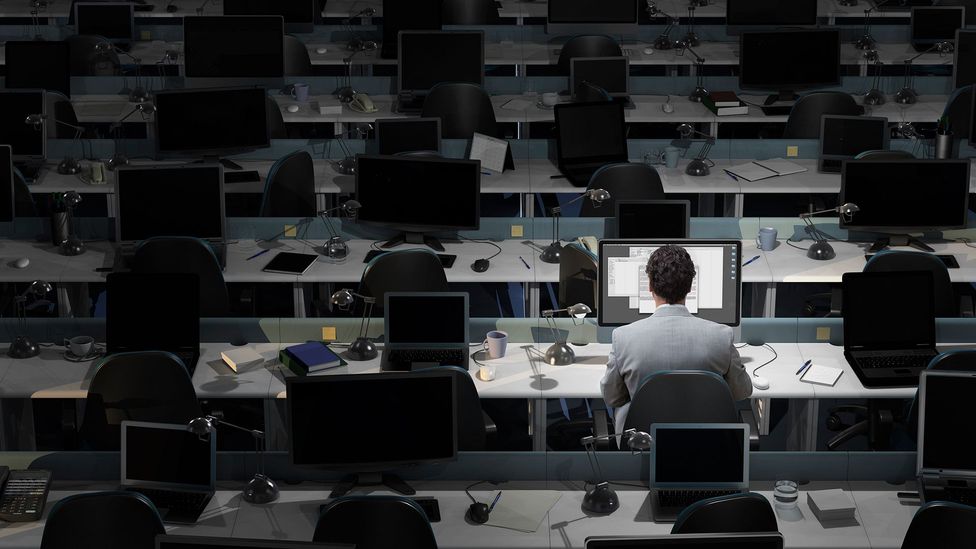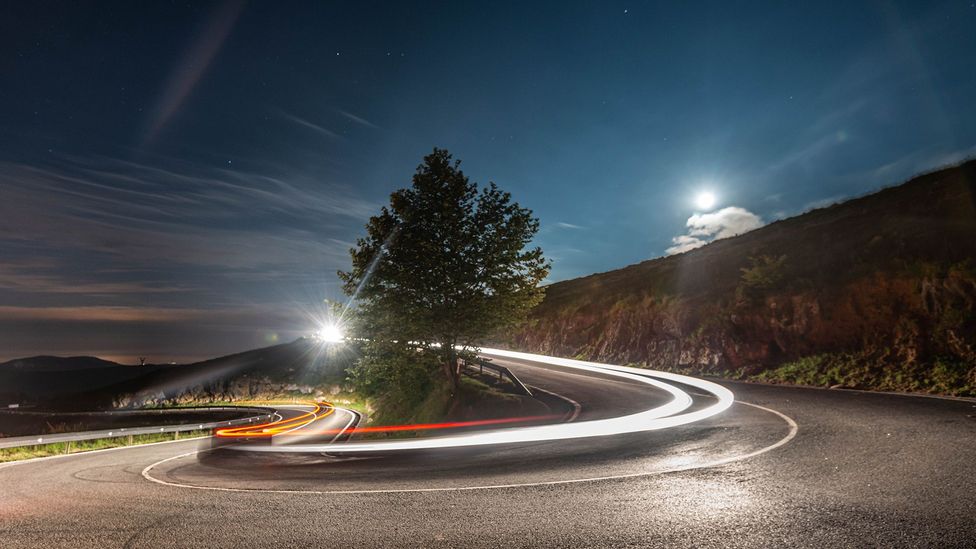
Far shorter than a nap, microsleeps can last only a few seconds. They may be a sign of deeper problems getting decent sleep.
We’re not talking about a five-minute doze on the sofa while you’re bingeing on a box set. That counts as a long time in the world of microsleeping. Here, naps are measured in seconds.
While there’s no single definition scientists use, many studies focus on shuteye that lasts from one to 15 seconds at a time. And there is a growing understanding of how microsleeps affect our daily lives, from intruding into mundane everyday tasks to putting lives at risk in certain situations, such as driving a car. But we are also getting closer to knowing why they might happen in the first place.
Recent research has revealed that the real experts in these tiny sleeps are chinstrap penguins. While their mates are at sea foraging for food, the penguins left behind nest en masse and must stay alert to protect their eggs from predators like the brown skua, as well as from aggression from other penguins.
Paul-Antoine Libourel, a sleep ecophysiologist at the Neuroscience Research Center of Lyon in France, measured the brain activity and sleep patterns of 14 penguins on King George Island in Antarctica. Over a 10-day period, the penguins never slept for longer than 34 seconds at a time. Instead they had more than 10,000 microsleeps lasting less than four seconds, sometimes in just one half of the brain at a time.
Four seconds might seem too short to have any restorative role, but the time adds up and each penguin was getting an impressive 11 hours of a sleep every 24 hours.
It seems to work for them, but for the modern human, microsleeps don’t get such a good press. The life-or-death situation where we need to stay alert, more often involves driving a big box of metal along a road at high speeds than avoiding a predator. Unfortunately, it’s a task that can be monotonous, but one that requires constant attention.
If you pull an all-night shift, the tendency to nod off the next day will be hard to resist
This is just the kind of situation (but without the risks) that experimenters have sought to replicate in the laboratory in order to investigate the nature of microsleeps.
In 2014, the first study exploring microsleeps by simultaneously using brain scanners, video recordings of people’s eyes and electroencephalogram (EEG) equipment to measure brainwaves was published. The team devised a very dull task for their unlucky participants. While lying in the scanner, they had a screen in front of them and a joystick in one hand. Their job was to use the joystick to ensure that a disc on the screen constantly kept up with a moving target.
It was so boring that people struggled to stay awake – 70% had at least 36 microsleeps during the 50-minute session. The scientists, based in Christchurch, New Zealand, expected a bit of napping, but not this much. Yes, the people had just had lunch and were lying down, but still, they weren’t sleep-deprived and anyone who’s been inside a magnetic resonance imaging (MRI) scanner will know that there’s a constant backdrop of a banging noise. It wouldn’t seem like the ideal place to nod off.
The more fatigued we are, the more likely we are to microsleep
Not surprisingly, microsleeps are even more common in people with narcolepsy. But research suggests that most of us are having them.
By giving people a fake steering wheel and a track to follow, other researchers at the University of Canterbury in Christchurch, observed them becoming drowsy with boredom, and demonstrating that all too familiar sequence you might know from trying to stay awake during a lecture in a warm room, where your eyelids close for a moment, your head nods a little and then suddenly jerks as you wake up again.
The more fatigued we are, the more likely we are to microsleep. Yvonne Harrison, a sleep researcher at the University of Loughborough, UK, found that these naps are more common in the afternoons and evenings and often precede a lengthier period of sleep
David Dinges, a professor of psychiatry at the University of Pennsylvania, keeps people awake all night to see how often they doze off the next day. After pulling an all-nighter, as you might expect, their lapses in attention (considered by many scientists to be microsleeps), become much more frequent. But, alarmingly in terms of road safety, he found that when people got six hours sleep a night for 14 days in a row, they had just as many microsleeps as those who had missed a whole night’s sleep.
Chinstrap penguins may nap up to 10,000 times in a day – but humans can’t get the sleep they need in the same way.
But unlike them, the people getting six hours’ sleep a night didn’t realise they were so fatigued. They just got on with it.
And we don’t even always know we’ve had a microsleep. In one study people were invited to deliberately take daytime naps in the lab and were then woken by the researchers after either a minute, five minutes, 10 minutes or 20 and asked whether they had been asleep or not. If they had been allowed to sleep for just 60 seconds, only 15% realised they had napped at all. Even after a 10-minute sleep, only half acknowledged they had fallen asleep.
This might make sense of those times where people strenuously deny to you that they nodded off in front of the TV, even though you could see they were clearly fast asleep
In terms of what is happening in the brain, microsleeps are largely characterised by a shift from alpha to theta waves, the kind of waves you see in the first stage of sleep. So far, so similar to normal sleep. But something else curious might be going on.
The New Zealand experiment where people followed a target with a joystick revealed an intriguing finding that surprised the researchers. Rather than a consistent winding down of activity in the brain as people nodded off, while some areas did become less active as expected, they saw something else: an increase in activity in the frontal and parietal cortex, the areas stretching back behind our foreheads.
A two-second sleep is enough for a car or a lorry to swerve into the next lane, which of course can be fatal
The team speculates that this might be an unconscious response to drifting off, an attempt not to sleep, but to stay awake. This isn’t seen in longer sleeps or napper, suggesting that microsleeps are different from normal sleep and not just shorter.
Analysing the data from this experiment in more detail nine years later, the team found not a decrease, but an increase in delta, beta and gamma waves during a microsleep, backing up the idea that when we fall asleep, but should be concentrating, our brains are aware of this and work to initiate a process to wake us up again.
When you’re not driving these sleeps might not matter that much, risking maybe missing out on a few seconds of a film or play, or at worse embarrassment if you are caught getting a bit of shuteye while someone is talking to you.
The problem is of course that with modern, fast vehicles, a two-second sleep is enough for a car or a lorry to swerve into the next lane, which of course can be fatal. So, we can’t risk any unplanned naps while we’re driving, however momentary they might be. Recent research conducted within a single truck company in Japan, employing almost 15,000 drivers, is instructive. Scientists analysed the dashcam footage from 52 of their professional drivers who had been involved in collisions after falling asleep.
A microsleep of a few seconds can be very dangerous – even potentially fatal – if you’re at the wheel of car.
The videos revealed that three quarters of them showed signs of a microsleep before the collision. The sequences of events for one driver went like this. A minute before the crash he started blinking rapidly, 38 seconds before the crash his body stopped moving, followed by some slow blinking and then four seconds before the accident his eyes closed for just two seconds. They opened again one second before the crash, but it was too late for him to do anything and the truck had left the road.
From these videos the researchers have identified ways of predicting that a crash would soon happen, which could be used to alert the driver. When they feel tired drivers try to stay awake by touching their face or body (they don’t give details, but I’m guessing this means something similar to slapping our own faces in an effort to wake ourselves up). They might stretch or fidget before the microsleep takes place. The researchers suggesting that any automatic system to detect that a driver is about to nod off includes much more than just whether they eyes close, but looks at wider movements in the body.
In the meantime as drivers, we need to be aware that we’re feeling sleepy, which is harder than it sounds considering that we don’t always detect that we’ve nodded off for a second. And if we do know we’re exhausted, just trying hard to concentrate isn’t always enough.
Willpower is not enough even when you know it will keep you alive
This was evidenced by the deaths among pilots returning to England after bombing raids during the Second World War, sleep research Jim Horne wrote in his book Sleepfaring: a Journey Through the Science of Sleep. During the dogfights their fear, focus, efforts to win, and adrenaline kept them awake, however tired they were. But once there were no distractions on the way home, there were some pilots who were overcome with the need to sleep and crashed their planes as a result.
Willpower is not enough even when you know it will keep you alive, on a long drive we need to heed the advice to pull over in a safe place as soon as you feel tired, to drink coffee, have a nap, and then wait for a time until you are fully awake before continuing driving.
For humans, unlike chinstrap penguins, microsleeps are no substitute for a proper night’s sleep. If they are very frequent, then it might suggest we’re not getting enough sleep. But when we’re not driving or doing something else where concentration is vital, perhaps we shouldn’t worry about a few seconds of extra shuteye here and there.